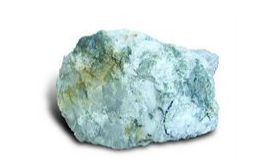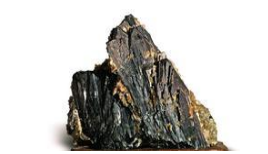

current position:Information and data>What is tungsten?
What is tungsten?
Tungsten is a metallic element. The chemical element symbol of tungsten is W, the atomic number is 74, the relative atomic mass is 183.85, the atomic radius is 137 picometers, and the density is 19.35 grams per cubic centimeter. It belongs to the sixth period (second long period) of the periodic table. VIB family. Tungsten is mainly a hexavalent cation in nature, and its ionic radius is 0.68×10-10m. Due to the small ionic radius of W6+, high electricity price, strong polarization ability, and easy formation of complex anions, tungsten is mainly in the form of complex anions [WO4]2-, combined with Fe2+, Mn2+, Ca2+ and other cations in the solution to form wolframite or white Tungsten ore precipitation. After smelting, tungsten is a silver-white shiny metal with extremely high melting point, high hardness, low vapor pressure, low evaporation rate, and relatively stable chemical properties. This is the foundation of our understanding of what tungsten is.
Tungsten is a non-ferrous metal. Usually people divide metals into two categories according to their color and properties: ferrous metals and non-ferrous metals. Ferrous metals mainly refer to iron, manganese, chromium and their alloys, such as steel, pig iron, iron alloys, cast iron, etc. Metals other than ferrous metals are called non-ferrous metals. Tungsten belongs to the category of non-ferrous metals. The strength and hardness of non-ferrous alloys are generally higher than those of pure metals, the resistance is larger than that of pure metals, the temperature coefficient of resistance is small, and they have good comprehensive mechanical properties. Therefore, as a non-ferrous metal, tungsten has very high strength and hardness. Due to this characteristic, tungsten carbide with high hardness and strong wear resistance is widely used in cutting tools and mining tools.
 Tungsten is a refractory metal. Generally, metals with a melting point higher than 1650 °C and a certain amount of reserves and metals with a melting point higher than the melting point of zirconium (1852 °C) are called refractory metals. Typical insoluble metals are tungsten, tantalum, molybdenum, niobium, hafnium, chromium, vanadium, zirconium and titanium. As a refractory metal, the most important advantage of tungsten is that it has good high temperature strength and good corrosion resistance to molten alkali metals and vapors. Tungsten only has oxide volatilization and liquid oxides above 1000 °C. However, it also has the disadvantage of high ductility-brittle transition temperature and difficult plastic working at room temperature. Refractory metals represented by tungsten have been widely used in metallurgy, chemical industry, electronics, light source, machinery industry and other sectors.
Tungsten is a refractory metal. Generally, metals with a melting point higher than 1650 °C and a certain amount of reserves and metals with a melting point higher than the melting point of zirconium (1852 °C) are called refractory metals. Typical insoluble metals are tungsten, tantalum, molybdenum, niobium, hafnium, chromium, vanadium, zirconium and titanium. As a refractory metal, the most important advantage of tungsten is that it has good high temperature strength and good corrosion resistance to molten alkali metals and vapors. Tungsten only has oxide volatilization and liquid oxides above 1000 °C. However, it also has the disadvantage of high ductility-brittle transition temperature and difficult plastic working at room temperature. Refractory metals represented by tungsten have been widely used in metallurgy, chemical industry, electronics, light source, machinery industry and other sectors.

Tungsten is a rare metal. Rare metals usually refer to metals that are less abundant or sparsely distributed in nature. Tungsten is a widely distributed element, which is found in almost all kinds of rocks, but the content is low. The content of tungsten in the crust is 0.001%, and the average content in granite is 1.5×10-6. This characteristic makes its extraction very difficult. Usually, it can only be separated and extracted by organic solvent extraction method and ion exchange method. With the advancement of science and technology, the development of metallurgical technology, equipment and analysis and detection technology, and the expansion of rare metal production scale, the purity of tungsten has been continuously improved, its performance has been continuously improved, and its varieties have continued to increase, thereby expanding the application field of tungsten. my country is rich in tungsten ore resources, and the output and total export of tungsten rank first in the world.
Tungsten is a strategic metal. As we all know, rare metals are important strategic resources of the country, and tungsten is a typical rare metal with extremely important uses. It is an important part of contemporary high-tech new materials. A series of electronic optical materials, special alloys, new functional materials and organic metal compounds all require the use of tungsten with unique properties. Although the amount is not large, it is very important, and it is indispensable. Therefore, it is widely used in contemporary communication technology, electronic computer, aerospace development, medicine and health, photosensitive materials, optoelectronic materials, energy materials and catalyst materials. my country's measures to restrict mining and export of rare metals represented by tungsten have led to continuous disputes between my country and the United States and the European Union. It can be seen that the strategic significance of tungsten is extraordinary.
Hot information

